An Overview of Patent Renewal
Patent Renewal is vital for the Patent’s existence. A Patent owner must make sure that the Patent is regularly renewed to ensure that the Patent is in force. In India, the payment of the renewal fees is made to the Indian Patent Office before the expiration of the relevant year. For example, the Patent Renewal fee for the 6th year has to be paid before the expiration of the 5th year from the Patent Registration date. The Indian Patent Office provides various ways and to ensure the Patent Renewal and Restoration.
Also, if the Patent owner didn’t pay the renewal fee on time, then the Patent gets expired and can only be restored by filing Patent Restoration in Form 15 within 18 months from the date of Patent expired. However, the Restoration totally depends on the Controller's decision.
Payment of Patent Renewal Fee in India
The payment of the Patent Renewal fee after the process of Patent Renewal should be made to the Indian Patent Office before the expiry of the relevant year. According to the Patent Act, the Patent owner can pay the Patent renewal fees in advance also for two or more years. For the fee payment, the Patent holder has got the quote, the Patent number, date, and therefore the year concerning the renewal fee is being paid. In the case of an extra Patent, no renewal fee is required to be paid & the fee payment schedule remains the same as most Patent.
In the case of additional Patent becomes an independent Patent, it will follow all the rules & norms of a standard Patent. There is also a facility of period extension for the payment up to 6 months if the suggested fee for the penalty is paid by the Patent holder for the renewal of the Patent.
Another vital thing to remember is that if the Patent is granted later than 2 years from the filing date of application, the payment of the pending fee has to be made within 3 months from the date of the Patent issue as mentioned in the Patent Register. The general idea of the overall process of Patent Renewal in India is that the renewal fees must be paid before the starting of every succeeding year. However, this period is extendable by 6 months by requesting an extension of time along with the prescribed penalty fees.
Process of Patent Renewal in India
Following is the process of Patent Renewal in India:
- Within 18 months from the date of expiration of Patent, the Restoration of a lapsed Patent in Form-15 should be filed;
- The Patent application should include the conditions in which the Patent owner was not able to pay the renewal fee within the given time. The statement has to be maintained by the reason for such delay in the payment of the renewal fee along with the documents as proof.
- The evidence should support the claim of the Patent owner that the failure of the fee payment was unintentional, and there was no redundant delay in applying for the Restoration of the Patent.
- The Patent Controller can also call for additional evidence in case the given evidence is not enough.
- If the Controller doesn’t agree that it is an obvious restoration case, then the applicant should be informed. The candidate has the option to show their restoration reasons within 1 month; if the candidate fails to show himself within one month, the application for Patent Restoration can be refused.
- If the Patent holder has failed to register for a name change before the expiry of the Patent, they must apply for the name modification first under Rule 94.
- If the Patent owner modifies the name after expiration, then they are required to prove their identity.
- The financial problem of the Patent Owner is not deemed as a ground for payment of renewal fees; rather, bankruptcy which results in physical impracticality to pay will be deemed as a logical cause for not paying the fees within time.
Patent Renewal Fee Structure in India
In India, there are two payment modes of the Patent Renewal fee; the following is the table of fee structure of Patent renewal in India:
Fee Structure for Online Filings:
|
Patent Year |
Individual/Small Entity Renewal Fee Respectively (INR) |
Standard Renewal Fee (INR) |
|
3rd |
800 / 2000 |
4000 |
|
4th |
800 / 2000 |
4000 |
|
5th |
800 / 2000 |
4000 |
|
6th |
800 / 2000 |
4000 |
|
7th |
2400 / 6000 |
12000 |
|
8th |
2400 / 6000 |
12000 |
|
9th |
2400 / 6000 |
12000 |
|
10th |
2400 / 6000 |
12000 |
|
11th |
4800 / 12000 |
24000 |
|
12th |
4800 / 12000 |
24000 |
|
13th |
4800 / 12000 |
24000 |
|
14th |
4800 / 12000 |
24000 |
|
15th |
4800 / 12000 |
24000 |
|
16th |
8000 / 20000 |
40000 |
|
17th |
8000 / 20000 |
40000 |
|
18th |
8000 / 20000 |
40000 |
|
19th |
8000 / 20000 |
40000 |
|
20th |
8000 / 20000 |
40000 |
- Fee Structure for Physical Filings: Above mentioned fees + 10% Patent Renewal Late Fee during the 6 months extension period.
|
Mode of filing |
Natural Person |
Small Entity |
Large entity |
|
E-filing |
480/month |
1200/month |
2400/month |
|
Physical filing |
528/month |
1320/month |
2640/month |
Restoration of Expired Patent
The Restoration of the expired Patent is a comparatively complex, time take, and costly process. To restore the expired Patent, the Patent owner should file Form-15 within 18 months from the date of Patent expires. A 1 month extension may be provided under the Patent Act, which is a discretionary power of the Patent Controller. Along with this form, the owner must also provide considerable evidence to prove that the non-payment of the Patent Renewal fee was unintentional. The evidence may be in the form of a letter, deed, or copy of documents.
The information or details given by the Patent owner is then reviewed by the Controller, who decides whether the non-payment case was unintentional. Moreover, the application for Patent restoration can be opposed by any individual interested by filing Form 14 along with the fee within 2 months from the publication date of the Patent Restoration application. In such an instance, both the Patent holder and the opponent get a chance to be heard before the Controller decides the case. Claimants must remember that the Restoration of an expired patent is not always a given chance to file the application.
Frequently Asked Questions
A Patent is granted for twenty years, and you cannot extend the lifespan of the Patent. After this lifespan expires, the invention no longer enjoys Patent protection, and the invention becomes part of the public domain.
After the expiration of the Patent Registration, anyone can use, make, sell, or import the invention without the permission of the Patent owner.
An expired or lapsed Patent no longer affords the Patent owner any protection.
The extension of a Patent claiming a product that requires regulatory consent prior to being sole, or a method or using, or manufacturing the product.
The application for the Patent extension must be submitted by the owner of the Patent or its agent.
An invention that has received a Patent pending status is safeguarded by the USPTO; you can sell your idea without worry.
You cannot file a Patent that you think are expired or abandoned.
Yes, you can buy an expired Patent by conducting a Patent Search via the USPTO website and checking if the Patent has expired. After searching for the Patent, you can go ahead and contact the Patent owner to negotiate to buy the Patent.


